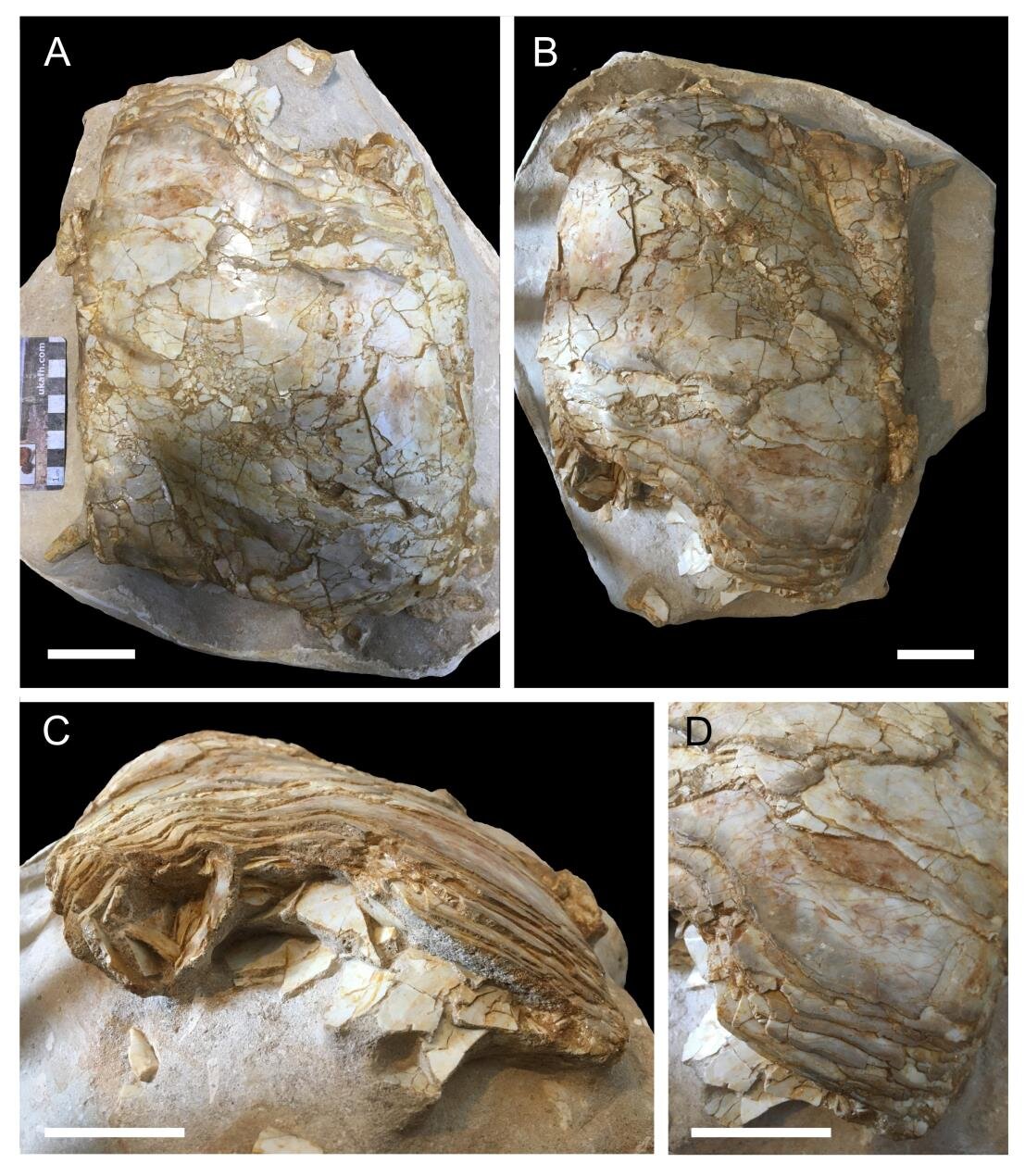Scientists from the University of Portsmouth have discovered the remains of a fish that belongs to the coelacanths. This
Recall living fossils is a collective name for existing species of plants and animals that belong to large taxa that almost completely went extinct tens or hundreds of millions of years ago.
By the way, the discovery of a huge fish was accidental.Professor David Martilla, a paleontologist at the University of Portsmouth's School of Environment, Geography and Geosciences, was asked to identify a large bone. She was in a private collection in London.
A collector bought the specimen, thinking it was a bonebelonged to a pterodactyl. However, Professor Martill discovered that the fossil was not a single bone, but a sample of many thin plates of bone. Their structure directly indicated that the remains belonged to a coelacanth.
 The original slab as it waspurchased, with a coelacanth lung ossified in close proximity to a series of connected but disconnected wing elements of a large but undefined pterosaur. Credit: University of Portsmouth.
The original slab as it waspurchased, with a coelacanth lung ossified in close proximity to a series of connected but disconnected wing elements of a large but undefined pterosaur. Credit: University of Portsmouth.
Professor Martille teamed up with the presenterBrazilian paleontologist Dr. Paulo Brito from the State University of Rio de Janeiro to identify the fossil. Dr. Brito has been studying coelacanths for over 20 years and is an expert on their lungs, and was amazed at the size of the new specimen.
 Sample of light coelacanth and its probable position as an anterior chamber in Mausonian coelacanths. Credit: University of Portsmouth.
Sample of light coelacanth and its probable position as an anterior chamber in Mausonian coelacanths. Credit: University of Portsmouth.
The fossil was enclosed in a block of phosphate,covered with plaster and covered with a layer of varnish that turned the bones brown. It was found next to a pterodactyl, which proves that it lived in the Cretaceous - 66 million years ago.
Private owner offered to cut from the stovethe remains of the bone lung and give them to the team free of charge. Then they had to remove the covering and additionally expose the bones using special equipment.
 View of a specimen of light coelacanth. Image D shows overlapping bone plates. Credit: University of Portsmouth.
View of a specimen of light coelacanth. Image D shows overlapping bone plates. Credit: University of Portsmouth.
Scientists realized they had found surprisingly largecoelacanth fish due to abnormal lung size. They calculated that it could be up to five meters long. This is significantly more than the rare and endangered modern coelacanths, which grow to only two meters.
Read more
Abortion and science: what will happen to the children who will give birth
Check out the most beautiful pictures of Hubble. What has the telescope seen in 30 years?
The Brunt shelf in Antarctica is collapsing at a speed of 5 meters per day